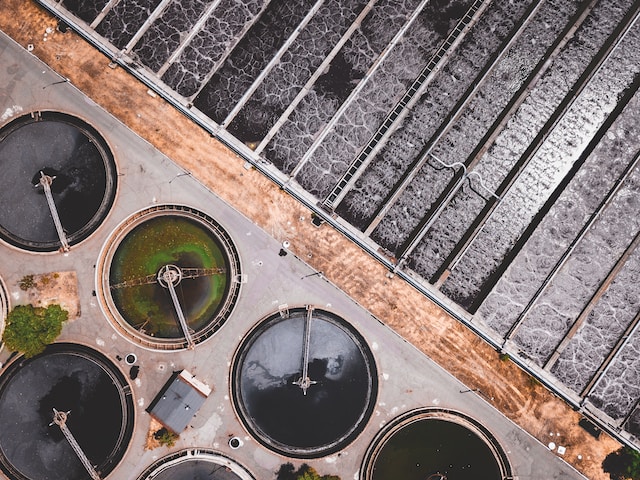In the concrete jungles of urban landscapes, the flow of water faces numerous challenges, causing flooding, pollution, and strain on existing infrastructure. However, nature has bestowed upon us a remarkable gift, known as Green Infrastructure for Sustainable Water Management in Urban Areas, which brings a refreshing breath of life and resilience to our cities. In this article, we embark on an exploration of this wondrous concept, delving into its creative applications and potential for transforming our cities into green oases.
Reviving Urban Ecosystems
The Role of Green Infrastructure
Imagine a city where nature seamlessly intertwines with urbanity, creating a harmonious balance between concrete and greenery. Green Infrastructure, comprising natural systems like green roofs, rain gardens, permeable pavements, and bioswales, harnesses the power of nature to manage water sustainably. Instead of relying solely on traditional gray infrastructure, which includes pipes and pumps, green infrastructure embraces eco-friendly solutions that mimic nature’s water management strategies. The magic lies in its ability to absorb, store, and cleanse rainwater, reducing the burden on stormwater drains while simultaneously revitalizing the urban ecosystem.
Creative Applications of Green Infrastructure
Green Infrastructure for Sustainable Water Management in Urban Areas unleashes a symphony of creative solutions to water-related challenges. Let’s explore some of the examples:
Rooftop Retreats – Transforming barren rooftops into lush green havens not only enhances urban aesthetics but also helps to absorb rainwater, reducing stormwater runoff and mitigating the urban heat island effect.
Rain Gardens – These picturesque gardens not only add beauty to the concrete expanse but also collect and filter rainwater, replenishing groundwater reserves and cleansing the water of pollutants.
Permeable Pavements – These innovative pavements allow water to seep through, replenishing groundwater while reducing surface runoff, preventing erosion, and minimizing flooding.
Living Walls – Living walls, adorned with plants, grace urban facades, cleansing the air and absorbing rainwater, showcasing the possibilities of harmonious coexistence between humans and nature.
Constructed Wetlands – Emulating the power of natural wetlands, these engineered marvels act as water treatment plants, removing contaminants and fostering biodiversity.
Adaptability and Resilience
Climate Change and Urban Water Resilience
In the face of climate change, urban areas are confronting new water-related challenges. From intense storms to prolonged droughts, cities must find resilient solutions to adapt and thrive. Green Infrastructure offers a lifeline, presenting adaptable strategies that can weather the storm and navigate the arid times.
Green Infrastructure and Grey Infrastructure Integration
As we envision greener cities, it’s essential to strike a balance between Green Infrastructure and traditional Grey Infrastructure. Green roofs can work hand in hand with stormwater drains, capturing rainwater before it overwhelms the system. By integrating these systems, we maximize their collective potential and create a sustainable urban water management powerhouse.
- Green Infrastructure for Sustainable Water Management in Urban Areas embraces natural systems like green roofs, rain gardens, permeable pavements, and bioswales.
- Creative applications include rooftop gardens, rain gardens, permeable pavements, living walls, and constructed wetlands.
- Green Infrastructure adapts to climate change challenges and complements traditional Grey Infrastructure.
Showcasing Green Infrastructure Triumphs
City X
City X, once a concrete labyrinth plagued by flooding and water pollution, embarked on a remarkable journey of transformation through the implementation of Green Infrastructure. The city’s visionaries integrated green roofs, rain gardens, and permeable pavements, turning barren spaces into flourishing green sanctuaries. As the rain poured, the city’s newly adopted infrastructure worked in harmony, absorbing and filtering rainwater, preventing floods, and nurturing the local biodiversity. City X became an inspiring model for other urban areas, showcasing the power of nature’s resilience in shaping sustainable water management.
Building a Greener Tomorrow
The success of Green Infrastructure in City X sent ripples across the globe, inspiring cities and communities to embrace this eco-friendly approach to water management. From sprawling metropolises to quaint towns, more and more regions incorporated green solutions into their urban planning. The result was not only a reduction in water-related issues but also a revival of hope and a sense of responsibility towards nurturing nature. The Green Infrastructure movement fostered a sense of community and a shared commitment to building a greener, sustainable tomorrow.
- City X’s transformation exemplifies the potential of Green Infrastructure for Sustainable Water Management.
- The success of City X’s initiatives inspired other communities to adopt Green Infrastructure solutions.
- The ripple effect of Green Infrastructure fostered a global commitment to sustainable urban water management.
Nature’s Legacy
Pioneering the Next Generation of Green Infrastructure
Research and innovation continue to propel the Green Infrastructure movement forward. Scientists and engineers collaborate to refine existing techniques and develop groundbreaking solutions. From self-sustaining green walls that purify air and water to advanced bioswales that adapt to changing rainfall patterns, the future of Green Infrastructure promises to be even more ingenious and adaptable.
Creating Green Advocates
Green Infrastructure is not just a set of techniques; it is a philosophy that empowers communities to connect with nature and advocate for a sustainable future. Educational programs and community engagement initiatives play a vital role in nurturing the next generation of green advocates. As more people understand the value of Green Infrastructure, they actively participate in its implementation and preservation, safeguarding nature’s legacy for generations to come.
It is evident that embracing nature’s resilient solutions holds the key to transforming our cities into thriving green oases. Through creative applications and integration with Grey Infrastructure, we can harness the power of nature to rejuvenate urban ecosystems, making them more adaptable, resilient, and sustainable. Let us not shy away from this harmonious dance with nature, for it is in this partnership that we secure a vibrant and prosperous future for our urban communities, and truly, for the planet as a whole. Let’s build our green oasis amidst the concrete jungles and celebrate the symphony of life that it brings.



